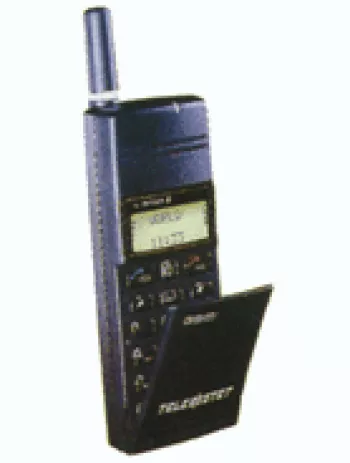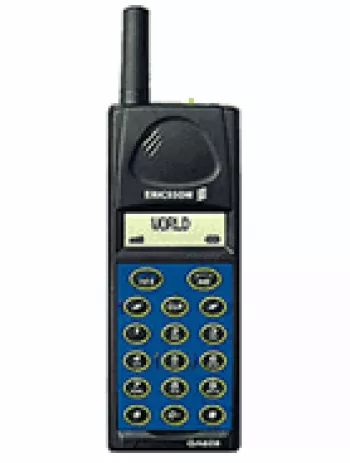
Introduction to Ericsson GO 118
The Ericsson GO 118 was a mobile phone model that made its appearance in the mid-90s, specifically announced in 1995. As characteristic of the mobile devices of its era, it belonged to the feature phone category. Despite its modest specifications compared to modern smartphones, the Ericsson GO 118 was a significant step in mobile communication technology during its time. This detailed article elucidates the features, specifications, and historical context of this device, offering a glimpse into the mobile communication technology landscape of the late 20th century.
Network and Connectivity
The Ericsson GO 118 supported GSM technology, operating on the GSM 900 frequency band. This was standard for mobile phones of that era, providing basic mobile connectivity. Notably, the device did not support GPRS or EDGE networks, meaning it was limited to voice and basic SMS functions without data capabilities. This aligns with the limited infrastructure and technology available in the mid-90s, rendering the Ericsson GO 118 primarily a voice communication device.
Launch and Availability
The phone was officially announced in 1995, during a period when mobile phones were transitioning from luxury items to more widely accessible communication tools. However, the device has since been discontinued. At the time of its release, it catered to consumers seeking a reliable communication device without the frills of modern smartphones.
Body and Design
The design of the Ericsson GO 118 is utilitarian and robust, reflective of the design ethos of the time. It measured 145 x 59 x 18 mm, making it relatively large by today’s standards, but quite typical for its era. The weight of 215 grams also suggests a durable build, primarily due to its larger components and the battery technology of the time. The device utilized a Mini-SIM format, again standard for the period.
Display
The display of the Ericsson GO 118 was an alphanumeric type, capable of presenting information in a simple 4 x 12 character resolution. This meant it could display basic SMS messages and menus, but lacked the graphical capabilities of later feature phones and smartphones. The screen's simplicity was sufficient for its primary function – making calls and managing contacts.
Memory and Phonebook
Memory in the Ericsson GO 118 was very limited. It did not include a card slot for expandable memory, which was standard for devices of this type and era. The internal memory could store up to 100 contacts in its phonebook, which was a reasonable capacity at the time, enabling users to keep their essential contacts readily accessible.
Camera
The device lacked any form of camera, which is unsurprising given the technological constraints and consumer demands of the mid-90s. Cameras in phones would only become widespread over the next decade.
Sound and Alerts
The sound features of the Ericsson GO 118 were elementary, with only monophonic ringtones available. It did not have a loudspeaker or a 3.5mm headphone jack, which were features that later became popular as consumer demands for media features increased.
Communication Capabilities
In terms of additional communication capabilities, the Ericsson GO 118 did not support WLAN, Bluetooth, positioning technologies, or radio. These features became commonplace in later generations of mobile phones but were not included in this model due to the technological limitations of the time.
Additional Features
The feature set of the Ericsson GO 118 was basic, which was typical for phones of its time. It supported SMS messaging but did not include a browser for internet access, clock functionalities, alarms, or games. It supported 12 languages, catering to a broader user base, and did not support Java-based applications.
Battery Performance
The device was powered by a removable NiMH 1200 mAh battery, providing up to 36 hours of standby time and around 180 minutes of talk time. While modest by today’s standards, these specifications were adequate given the phone's limited functionality and the energy demands of the technology available at the time.
Color Variants and Miscellaneous
Information about color variants for the Ericsson GO 118 is limited, suggesting that any available options were likely basic and focused more on practicality than variety. The primary purpose of the device was communication, not personalization, which is reflected in its utilitarian design and functionality.
Historical Significance
The Ericsson GO 118 holds significance as a representative of its era – a time when mobile phones began making the transition from a niche luxury to a vital personal communication tool. Its basic feature set and durable design make it a notable example of mid-90s mobile technology. This device marked a step towards the increasingly mobile world, laying down the foundations for the more advanced and feature-rich devices that followed in the subsequent decades.
Conclusion
The Ericsson GO 118, while basic by today’s standards, was a cornerstone in the development of mobile telephony. Its design and feature set are a reflection of the technological capabilities and consumer needs of its time. It served its purpose as a reliable means of communication, paving the way for the advanced mobile technologies we see today. As such, it remains a noteworthy chapter in the history of mobile communications technology.
Key Features of Ericsson GO 118
- Supports GSM 900 network technology
- Compact dimensions: 145 x 59 x 18 mm
- Lightweight for its era, weighing 215 g
- Mini-SIM support
- Alphanumeric display with 4 x 12 characters resolution
- Phonebook capacity of up to 100 contacts
- Monophonic ringtones for alert types
- Supports SMS messaging
- Supports 12 different languages
- Removable NiMH 1200 mAh battery
- Talk time of up to 180 minutes
- Stand-by time of up to 36 hours
Drawbacks of Ericsson GO 118
- Lacks advanced network technologies such as GPRS and EDGE.
- The device is discontinued and no longer supported.
- Heavy and bulky with a weight of 215 g.
- Limited display resolution with a 4 x 12 character alphanumeric screen.
- No expansion options with a lack of a memory card slot.
- Limited phonebook capacity with space for only 100 contacts.
- No built-in loudspeaker for hands-free use.
- Limited ringtone options with only monophonic ringtones available.
- Absence of standard 3.5mm audio jack.
- No support for modern connectivity features such as WLAN, Bluetooth, and USB.
- Lacks integrated positioning and radio features.
- Limited messaging capability, supporting only SMS.
- Absence of clock and alarm features.
- No built-in games for entertainment.
- No support for Java-based applications.
- Short battery life in standby mode, lasting only 36 hours.
View Also
More Phones
All Rights Reserved +14266 Phones © Mobilawy 2025

























